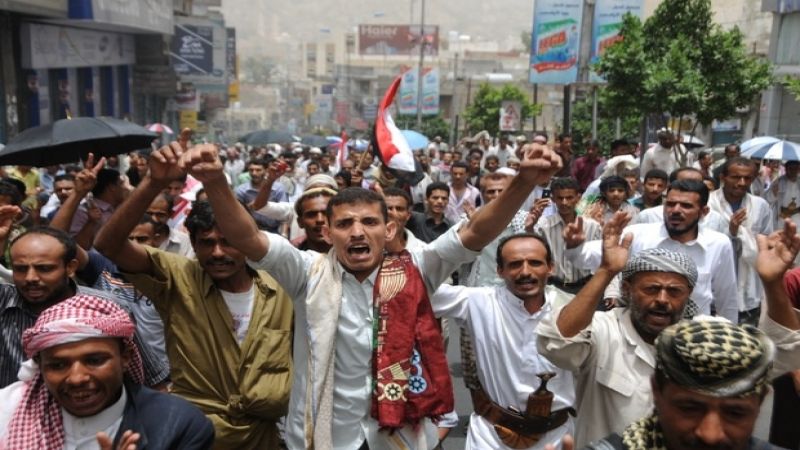
By Baraa Shiban
… It has been two years and three months since Saudi Arabia launched its aerial campaign to restore the Hadi regime ... .
The conflict has resulted in deep polarization within the Yemeni community. But whatever side you support, most Yemeni people agree that the continuation of the current conflict threatens the very existence of our country.
According to UN estimates, almost 10,000 people have been killed, 3.1 million people are internally displaced and almost 14.1 million are food insecure.
In April, the UN Office for Coordination of Humanitarian Affairs – OCHA – held a donors conference in Geneva to raise funds for its humanitarian response plan for Yemen. Countries pledged $1.1bn. So far, OCHA says only $605m has been paid.
And when you hear about Yemen in the mainstream media, it is this same angle – the country’s humanitarian crisis, solutions to fix it and failures to fulfill these needs - that you will hear about, in various shapes and forms, over and over again.
Even if Yemen doesn’t always make the headlines, it’s easy to convince the public that Yemenis are in the midst of a dire humanitarian situation and, therefore, in need of donations and food packages. But that doesn’t mean this is good media coverage or that it even helps.
To significantly improve the situation in Yemen, we need complex and nuanced reporting. But given that Yemen is a conflict that doesn’t directly impact Europe or the US, detail is a luxury that editorial meetings and newsrooms apparently cannot afford.
The story of what has happened in Taiz City since 2011 is a good example of the type of local details that journalists, aid organizations and the UN need to understand to better respond to the ongoing crisis in the country.
How details matter in Taiz
In Taiz, there has been ongoing fighting for nearly two years between the Houthi-Saleh forces and … fighters loyal to resigned Yemeni President Abd Rabbuh Mansour Hadi.
In February 2015, as the Houthis-Saleh forces were advancing south, they took control of the city to secure military access to Aden, which Hadi announced as a temporary capital for his regime….
… Taiz turned into a war zone and fighting started in almost every street.
After August 2015, the situation became so dire. The entire health system collapsed and only three hospitals in the city remain functioning with very limited capacity.
In December 2015, the UN envoy to Yemen, Ismail Ould Cheik Ahmed, was preparing for the second round of peace talks. He suggested trust-building measures, including a ceasefire, forming de-escalation committees, releasing detainees, lifting the Saudi-led blockade and aid access into besieged areas.
These measures were supposed to be implemented nationwide before the peace talks. However, the second round concluded, none of the measures were carried out and, in Taiz, the siege continued.
End the siege
The city has been pounded by missiles and, during the third round of peace talks in June 2016, a series of missile attacks led to the death of 60 civilians, according to Watch Team, a group that provides support to civilians in besieged areas of Taiz.
According to Akram el-Shawafi, who is a member of Watch Team and one of the many civilians now trapped in the city and looking for clear answers to how their misery will end, the number of civilian casualties in Taiz alone have exceeded 3,000.
I talked to Akram a couple of weeks ago, soon after the OCHA donors conference in Geneva. He wondered how it was that the UN and the countries who gathered there would actually help end the siege on his city.
Instead of raising money or trying to implement nationwide measures ahead of negotiations, the UN, he emphasised, should focus on ending the siege and allow access of aid, in order to reach a solution for the country as a whole.
If the UN succeeded in ending the siege in Taiz, it would provide a breakthrough in the peace talks and show the whole the country that the conflict is coming to an end.
The siege and the missiles that continue to fall are not the only problems facing those in Taiz. According to the deputy governor of Taiz, almost 400,000 people still live in the city and public servants haven’t received their salaries for eight months now.
Akram and his colleagues are receiving support from abroad that they redirect to locals living in Taiz, but they tell me they can’t last forever. Sending food packages won’t solve the crisis.
Finding permanent solutions
Humanitarian aid may provide temporary solutions, but it can’t cover the absence of government. …
Lifting the siege and providing salaries are pressing issues that the international community …can solve. Rather than endless discussions with senior politicians in Geneva, these problems require a bottom-up approach, decentralizing program and working with local councils.
Taiz is not the only city going through a crisis. In northern Yemen, Saada city has had its share of the current humanitarian crisis. Continuous bombing by the Saudi-led coalition including strikes on markets and hospitals have led to many deaths and forced many people to evacuate their homes.
Over the past two years, many Yemenis have lost trust and hope in the international community. Humanitarian aid – the lack of it and the need for it – can make a flashy headline, but one that covers up the real problem that lies beyond.
The problem in Yemen is that local grievances that had been suppressed by the central government for many years have now emerged… . The people of Yemen know this, but the UN, which continues to deal with the crisis at an elite level, does not.
Source: MEE, Edited by Website Team